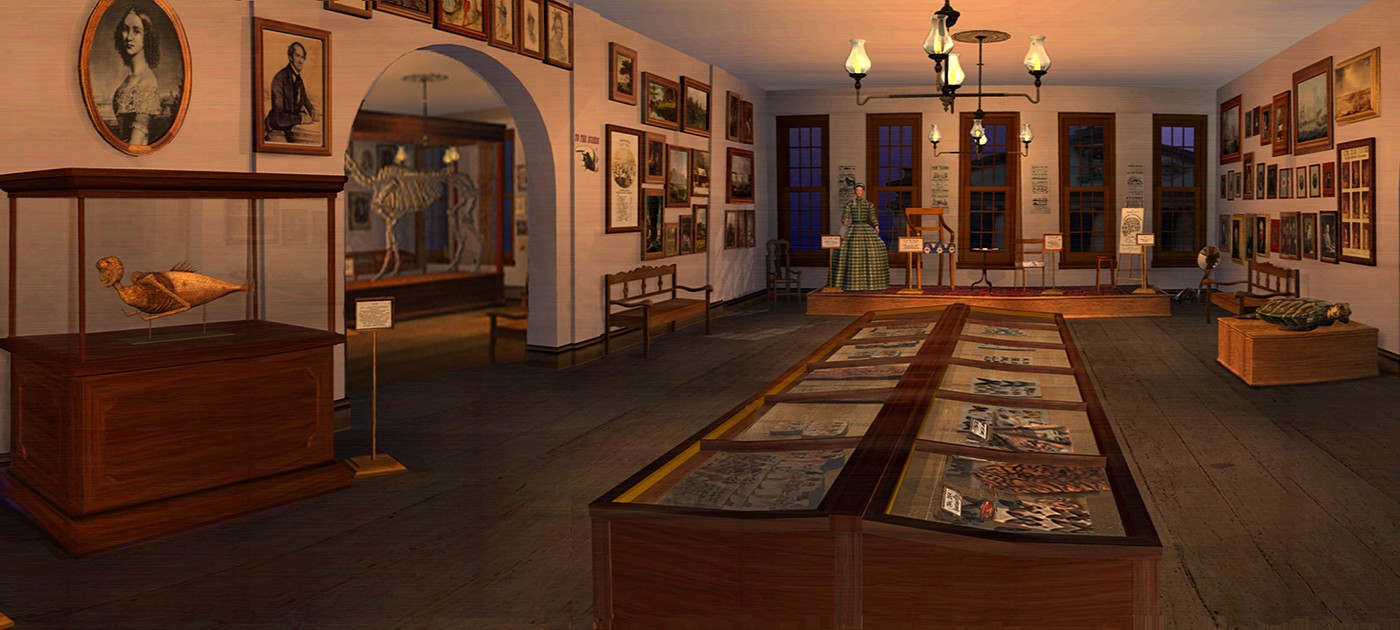150 Years Later: Who Burned Down P. T. Barnum’s American Museum? Award Winning Digital Re-Creation Returns
June 30, 2015

nn n
n
On July 13, 1865, in a spectacular fire witnessed by thousands of New Yorkers, P. T. Barnum’s American Museum in downtown Manhattan mysteriously burned to the ground. The five-story building on Broadway and Ann Street—called “the most visited place in America”—had housed a continuing array of artifacts, oddities, productions, and creatures since its opening in 1841. This July, to mark the 150th anniversary of the destruction of Barnum’s American Museum, the award-winning Lost Museum website (http://lostmuseum.cuny.edu/), first launched by American Social History Project in 2000, will re-launch in a new, enhanced format with larger graphics, clearer navigation, and with full access for the many tablets and devices that now connect to the Internet.
Barnum’s American Museum was one of the most significant cultural institutions in New York City history yet is now largely forgotten. Occurring three months after the close of the Civil War, the museum’s fiery demise, with the terrible spectacle of burning animals and onlookers cavorting among smoldering attractions, provided an unforgettable end to an institution created by the legendary showman that had entertained, educated, and often scandalized a generation of Americans. And even after its disappearance, Barnum’s American Museum would remain the model for mass entertainment extravaganzas.
It was not until 2000 that Barnum’s American Museum once again opened its doors to the public—but this time in virtual form. Years in the making, The Lost Museum, a website produced by the American Social History Project/Center for Media and Learning at the City University of New York Graduate Center and the Roy Rosenzweig Center for History and New Media at George Mason University, took visitors back to the nineteenth century on a 3-D tour of the American Museum and its myriad attractions. Supported by the National Endowment for the Humanities, informed by the latest scholarship, and utilizing cutting-edge technology, The Lost Museum was widely hailed in the press and broadcast media; received numerous new technology and education awards and citations; and garnered tens of thousands of virtual visitors internationally.
Now, thanks to this updated and redesigned version of The Lost Museum, the mysterious FeeJee Mermaid, the beautiful Circassian Woman, Confederate president Jefferson Davis in his wife’s dress—these and many other revelations and deceptions are again on view, supplemented by a rich archive of historical documents and artifacts. And visitors also have the option to seek out clues to discover who, among suspects representing social and political figures of the period, may have set the fatal 1865 fire.
Contact: Andrea Vásquez (avasquez1@gc.cuny.edu)
